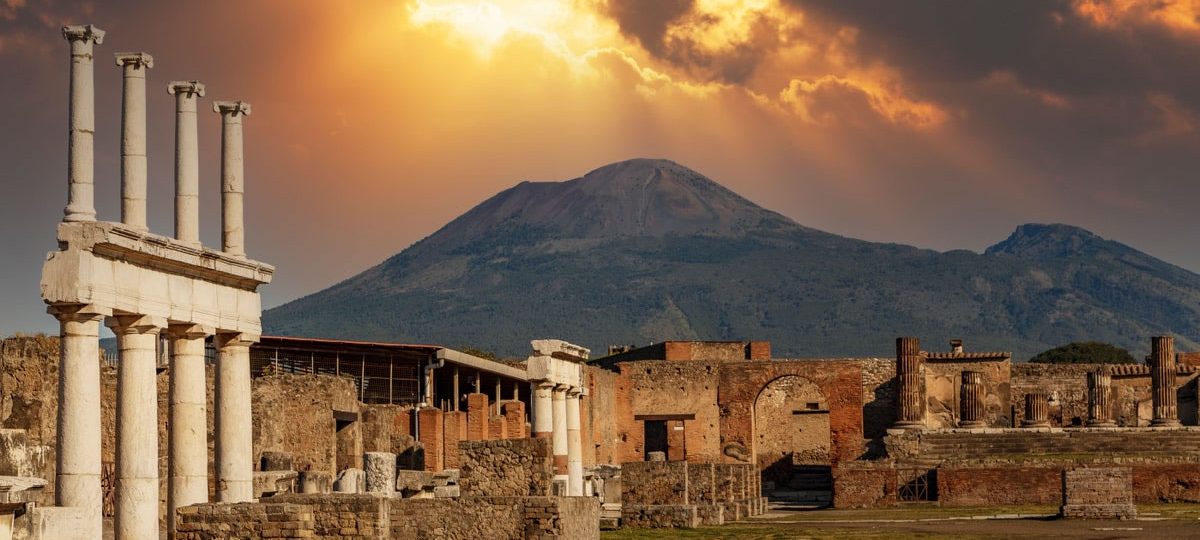Welcome to Pompeii, Italy
Introduction
Imagine stepping into a city frozen in time, where the echoes of ancient Roman life still resonate. Pompeii, located near the Bay of Naples in Italy, offers this unique experience. Buried under volcanic ash after Mount Vesuvius erupted on August 24, 79 AD, Pompeii is an extraordinary archaeological site that provides a detailed glimpse into the daily lives of its ancient inhabitants.
History
Pompeii was a thriving city in the Roman Empire, strategically positioned as a commercial hub. The catastrophic eruption of Mount Vesuvius in 79 AD buried the city under ash, preserving it for centuries. Rediscovered in the 18th century, Pompeii offers invaluable insights into Roman life, with everything from jars and tables to frescoes and human figures preserved in remarkable detail.
Attractions
Exploring Pompeii is akin to walking through history. The well-preserved ruins allow visitors to envision life in ancient Rome. Key attractions include:
- The Forum: This was the political, religious, and commercial heart of Pompeii. Visitors can explore the ruins of temples, basilicas, and markets that once thrived with activity.
- The Amphitheatre: This grand structure hosted gladiatorial contests and other spectacles, offering a glimpse into ancient Roman entertainment.
- Villa of the Mysteries: Known for its exquisite frescoes depicting enigmatic religious rituals, this villa showcases the artistry and culture of ancient Rome.
- Herculaneum: Located nearby, Herculaneum was also buried by the eruption. Its well-preserved ruins, including homes and public buildings, are worth exploring.
Best Time to Visit
The ideal time to visit Pompeii is during the spring (April to June) and fall (September to October) when the weather is pleasant and the crowds are smaller. The summer months can be extremely hot and crowded, so they are best avoided if possible.
How to Get There
Reaching Pompeii is straightforward. The nearest international airport is Naples International Airport. From there, you can take a train or bus to Pompeii. If you’re already in Italy, trains from major cities like Rome and Naples provide easy access.
Local Transportation
Once in Pompeii, the archaeological site is best explored on foot. The main entrance is near the Circumvesuviana train station. Comfortable walking shoes are recommended due to the uneven terrain. Consider hiring a local guide for deeper insights into the history and significance of the ruins. Guides are available near the entrance and can enhance your visit with their knowledge.
Visitor Information
The archaeological site is open daily from 09:00 to 19:00 from April to October, and from 09:00 to 17:00 from November to March. It is closed on January 1st, May 1st, and December 25th. Tickets cost €18 for a one-day visit to the ancient city, with additional options for extended visits and discounts for EU citizens under 25. Admission is free on the first Sunday of each month.
Audioguides are available for €8, and a free app, MyPompeii, offers guided tours and information. For a more comprehensive experience, consider the MyPompeii card, which provides access to all sites within the Archaeological Park of Pompeii for a year.
Summary
Pompeii is a remarkable destination for history enthusiasts and curious travelers alike. Its ruins offer a vivid snapshot of ancient Roman life, preserved in stunning detail. With its convenient location and rich historical significance, Pompeii is a must-visit for anyone interested in exploring the past.




